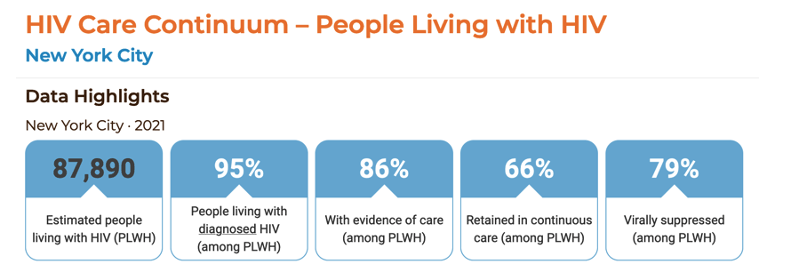| |
Integrating a Resilience Framework to Assess
Implementation of a Novel HIV Care Re-Engagement Model in NYC
|
| |
| |
Download the PDF here
Nov 1 2023
Nearly one-third of people with HIV (PWH) in New York City (NYC) are not retained in HIV care and are at increased risk for morbidity, mortality, and onward HIV transmission.1,2 "Data to Care" projects use demographic, clinical, and administrative data from different sources to facilitate health care re-engagement efforts by outreach specialists, including care coordination teams, community-based organizations (CBOs), and public health field workers.3 Increasingly, Data to Care information is sourced from state and national health information exchanges (HIEs). Data to Care projects using HIEs have been applied across a diverse range of health conditions, including those supporting PWH.4-7 In February 2019, several diverse NYC HIV service organizations and evaluators collaborated to implement the Bottom Up Data to Care Project (Bottom Up or the Project). A bottom-up design integrates disparate systems to meet local needs or policy goals including conducting community outreach.8 The Bottom Up Project uses HIE tools, such as real-time care encounter alerts, to locate and stimulate peer support outreach by a CBO to assist PWH to return to medical care.

Abstract
Background:
The Bottom Up Project, a collaboration of clinical, community, and academic partners, consists of 7 major steps that leverage a health information exchange, a system for sharing patient health information, with real-time alerts to mobilize peer outreach workers to find and re-engage persons with HIV disconnected from care. Bottom Up faced implementation challenges in its start-up phase and produced effective responses leading to Project maturation, which we explore using a novel implementation science framework incorporating resilience.
Methods:
We conducted semistructured interviews with implementation staff (N = 6) and meeting minutes and protocols document reviews (N = 35). The Consolidated Framework for Implementation Research and a novel resilience framework guided thematic and process analyses. The resilience framework consisted of the following 3 resilience types: absorptive to cope with adversity, adaptive to adjust as short-term solutions, and transformative to structurally change.
Results:
The Project experienced 20 major challenges, 2-5 challenges per step. Challenges were multilevel and of chronic and crisis intensities. Implementers overcame challenges by leveraging multilevel factors that were absorptive, adaptive (most common), and transformative.
Discussion:
Bottom Up matured by practicing consistency and flexibility. The Project maintained core operations while under crisis-level stress by strategically simplifying or "downshifting" activities. Transformational responses suggest that specific initiatives can catalyze organizational change.
|
|
| |
| |
|
|
|